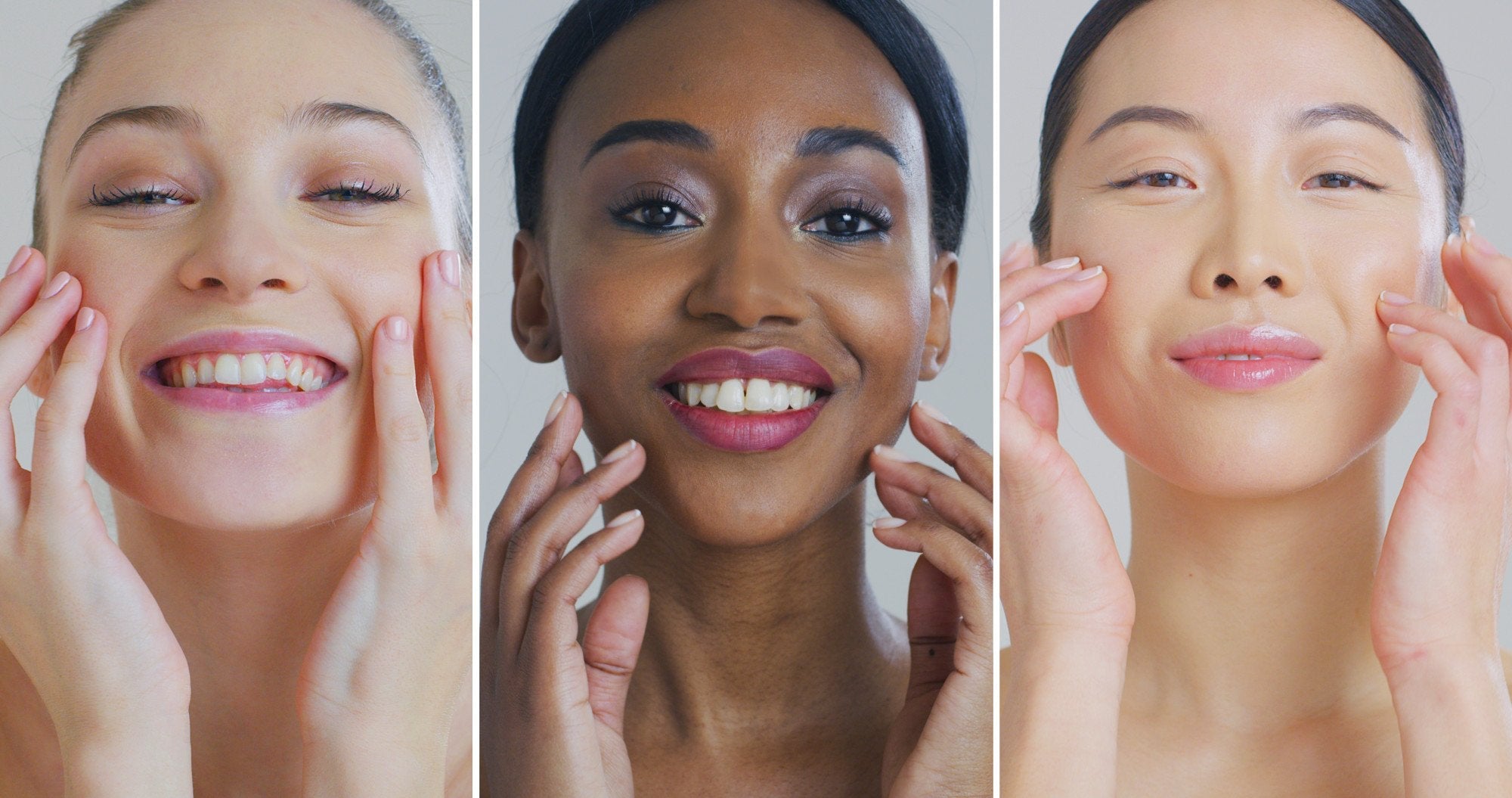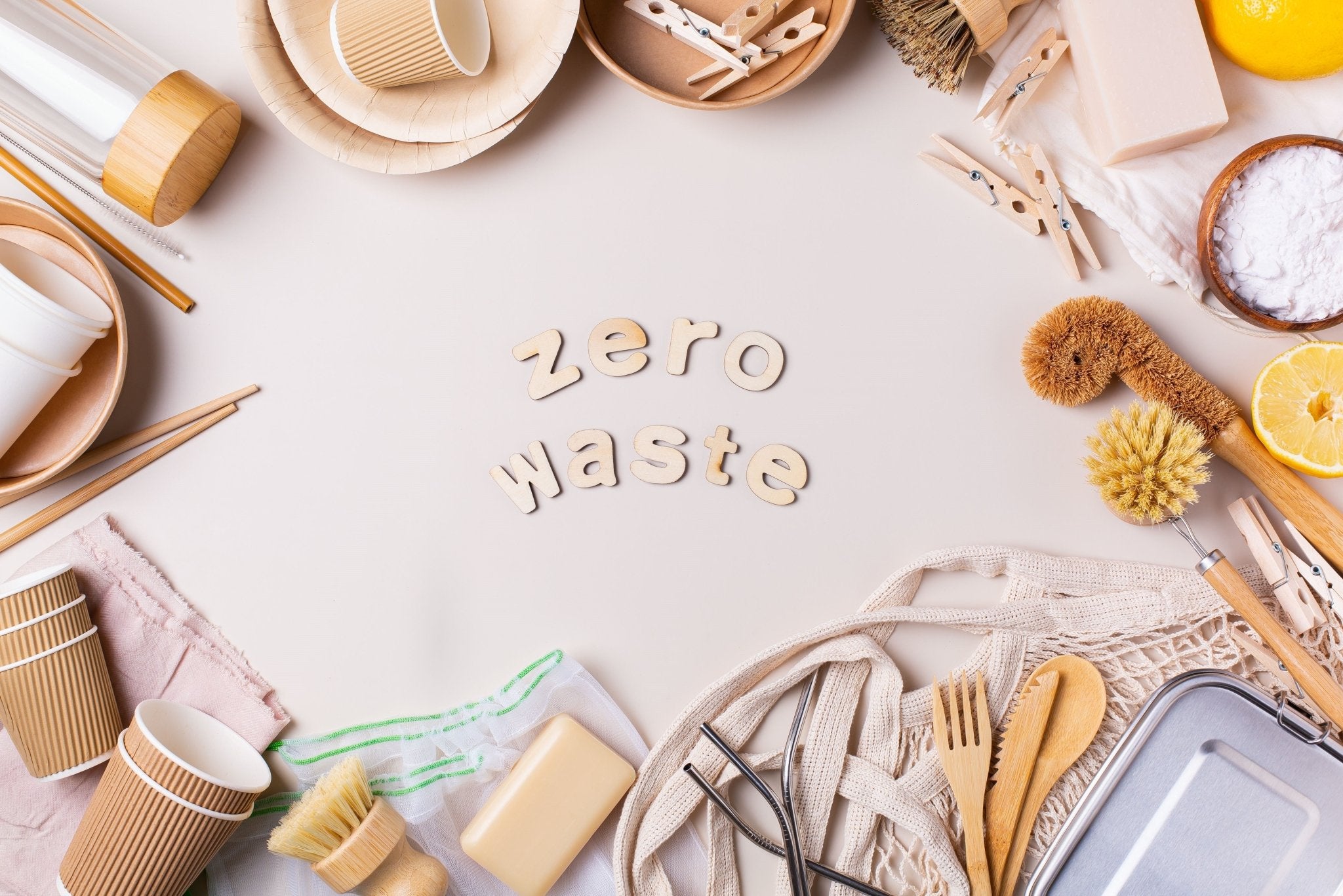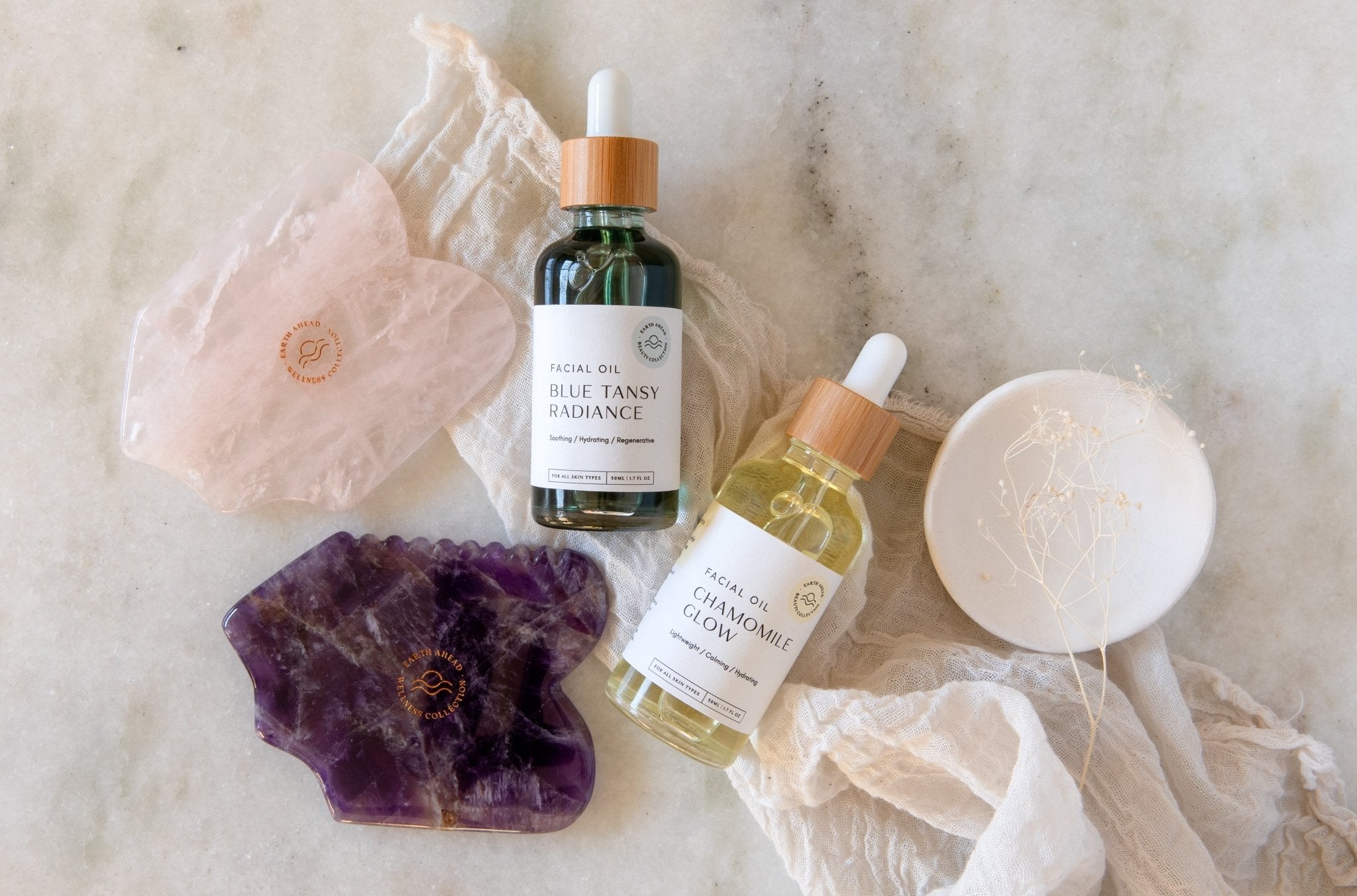How to Use Gua Sha

A pilot study reveals a concerning trend: the daily application of non-organic skincare products is reshaping our skin's microbial landscape. This is altering your skin's natural structure and biophysical traits. As a result, the shift underscores the growing need for alternative, skin-friendly practices.
Enter Gua Sha, an ancient technique that remains a mystery to many, yet holds the key to unlocking healthier skin. If you're among those curious about how to use Gua Sha effectively, you're in the right place.
This guide demystifies Gua Sha, showing you step-by-step how to integrate this traditional practice into your daily skincare routine for optimal results.
What Is Gua Sha?
Gua Sha is a traditional Chinese technique that promotes your skin's energy flow known as "chi." The practice involves gently scraping a stone tool over your neck and face in an upward sweep. This tool is often cut to fit the contours of your face.
The pressure from the gua sha tool creates friction, increasing blood flow. As a result, this can improve your skin health.

Types of Gua Sha Tools You Can Use
To enhance your skin, you can use various gua sha tools. These tools cater to different areas of the body. Let's explore the diverse types of Gua Sha tools available:
Gua Sha Board
Flat and rectangular, this is the most common gua sha tool. Gua sha boards are often made of rose quartz, jade, buffalo horn, or stainless steel. You should use it for larger body areas like your back, legs, and arms.
Gua Sha Spoon
Gua sha spoon features a curved shape. It's ideal for treating the face and neck. This tool is usually made from jade or rose quartz.
Gua Sha Rollers
If you prefer a rolling motion over face scraping, try out gua sha rollers. They feature a roller attached to a handle for massaging your skin.
Some gua sha rollers have a smooth surface, while others are textured for deeper tissue massage. Materials used to make gua sha rollers include stainless steel, jade, or rose quartz.
Gua Sha Stones
Similar to gua sha boards, gua sha stones are small and flat but designed to be hand-held. This allows for precise application.
They're suitable for treating smaller areas, such as the face and neck. Gua sha stones can be made from amethyst, jade, black obsidian, and more.
 How to Use Gua Sha: Step-by-Step Guide
How to Use Gua Sha: Step-by-Step Guide
Step 1: Cleanse and Tone
Before you start, ensure your skin is clean. Cleanse your face thoroughly to remove impurities. If you use toner, apply it post-cleansing for added freshness.
Don't forget to clean your hands and the gua sha tool. You can wash them using a bar soap or liquid soap and water.
Step 2: Apply a Facial Oil
Next, apply a facial oil, cream, or water-based lotion. Ensure you rub in a generous amount to your face, neck, and chest. Facial oil helps provide slip, allowing your gua sha tool to glide smoothly for optimal results.
Step 3: Perform Gua Sha
When performing gua sha, hold the tool at a 30 to 45-degree angle for effective use. Start the practice by gently pulling or scraping the tool across your skin.
All movements you make should follow the upward direction, aligning with lymphatic flow. Here are some recommended gua sha movements:
- Jawline and Chin: Glide the tool from the center of the chin to the earlobe to contour your jaw
- Forehead: Divide your forehead into three sections: start from the center and glide outwards
- Cheek: Sweep the tool upwards along the cheeks and cheekbones, moving outwards towards the ears
- Under Eye: Glide from the inner corner of the eye outwards towards the temple
- Brows: Move the tool upwards along the brow bone, going from the inside out
- Lips: Glide over the lips back and forth to achieve a plumping effect
- Neck: Divide the neck into four sections and scrape each section from the bottom up
For each target area, repeat each movement three to five times (maximum ten times) before transitioning to the next area. Watch this quick beginner guide to see how to perform gua sha.
Step 4: Remove Excess and Complete the Self-Care Routine
If there is any remaining product, massage it into your skin with your hands for added absorption. You can also use a damp cloth to wipe away excess oil or cream.
Finish your skincare routine as usual. You can apply moisturizers, serums, or any products you usually use.

How Often Should You Gua Sha?
While weekly use is recommended, finding the right balance depends on individual factors. You have to assess your skin type and your skin's tolerance for the technique.
If you're starting, it's advised to perform gua sha once or twice a week. It allows your skin to adapt to the technique. Once you become more comfortable, gradually increase the frequency to three or more sessions per week.
For the best outcome, skincare experts suggest performing gua sha three to four times a week. Perform each session for at least three to five minutes.
Discover the Holistic Benefits of Gua Sha
Gua Sha is a celebrated technique in Traditional Chinese Medicine (TCM). When you add it to your beauty regimen, it offers a myriad of advantages. Let's explore the detailed benefits of Gua Sha for healthy skin.
Allows for Lymphatic Drainage
A sluggish lymph system can lead to various skin problems such as puffiness, fatigue, and acne. Luckily, gua sha is a credible solution.
The technique promotes muscle movement and massage, facilitating lymphatic drainage. As a result, it addresses concerns like swollen skin and acne-related issues.
Softens Fine Lines and Wrinkles
Gua Sha helps in collagen production, reducing puffiness. As your facial muscles and tissues relax, they can smooth out signs of aging. You will notice the softening of fine lines and wrinkles, improving your youthful appearance.
Helps Deal With Cystic Acne
Although some believe gua sha is unsuitable for acne-prone skin, it can help deal with acne problems. Since the process improves circulation and prevents congestion, it helps reduce flare-ups, redness, and acne size. However, avoid using gua sha on broken skin and pustules.
Reduces Appearance of Acne Scars
Gua sha brings fresh blood to your skin's surface, renewing skin cells. As a result, this reduces the visibility of acne scars. For enhanced results, consider using gua sha on self-care products like Vitamin C serum or kumkumadi oil.
Lessens Cellulite Appearance
When you use gua sha in targeted areas, it can stimulate circulation. This helps reduce fluid retention, easing the appearance of cellulite on your skin.
Reduces Puffiness
Gua sha removes lymph and fluids, resulting in tightened and more sculpted skin. You will notice less puffiness and enhanced facial contours. While it won't eliminate a double chin, it can lessen short-term puffiness.
Deals With Dark Circles and Dull Complexions
With gua sha, you can enhance blood circulation. This helps improve blood flow, reducing dark circles. It can also brighten your complexion for a more youthful glow.
Contours & Sculpts Jawline and Cheekbones
Regular gua sha application leads to a more defined jawline and sculpted cheekbones. When you apply it properly on your jawline and cheekbone area, Gua sha helps release tight facial muscles. This will provide a temporary appearance of a more sculpted face.
Eases Tension and Pain
Experiencing tension and pain? Try gua sha. When you adjust the pressure you apply with your gua sha tool on target areas, it can help alleviate tension and pain.
Relaxes Your Body
While the facial gua sha technique is ideal for healthy skin, its impact extends far beyond cosmetic advantages. The practice of gua sha on the face targets meridian pressure points, influencing internal organs. This will help enhance various aspects of overall bodily functions, promoting stress relief and relaxation.

Does Gua Sha Hurt?
While gua sha is generally safe for all skin types, its comfort depends on proper technique. If you use too much force or incorrect execution, you may experience discomfort during the technique.
When done correctly, gua sha is a safe and pain-free practice. In case you notice any pain during the process, try using gentle, controlled motions are crucial. Consult with a physician for persistent discomfort.
Potential Side Effects of Gua Sha and When to Avoid It
While Gua Sha is a beneficial practice, improper use can lead to negative side effects. These impacts can range from mild to severe. Here are the potential side effects of gua sha:
- Bruising (Petechiae)
- Swelling
- Skin sensitivity
- Redness
- Muscle membrane tears
- Infections
Remember gua sha isn't recommended for everyone. If you have sunburns, rashes, or blood coagulation problems, avoid this technique. These conditions may exacerbate the potential risks of gua sha.

Maintain a Healthy and Sustainable Skincare Regimen
Gua sha emerges as a powerful tool for achieving healthy, radiant skin in the beauty industry. Knowing how to use gua sha can help you unlock a new level of self-care. It will also improve your skin glow and vitality.
If you need quality gua sha tools, look no further than Earth Ahead. We offer eco-friendly gua sha tools that come in plastic-free packaging. Shop our Gua Sha collection today!




Comments